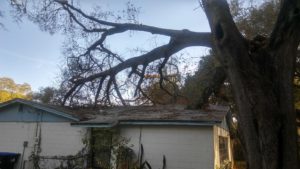Pruning a tree is an integral part of tree health and growth. The removal of damaged, diseased, or even dead branches and stems can help to prevent insects and decay from entering the tree. Sometimes large limbs of a tree may need to be removed but should always be the last option. The effects of removing branches should be discussed with a qualified tree care provider.
When pruning trees, it is essential that you practice safety and use the proper tools for pruning. These tools would include a small hand saw or a pole pruner.
Risks of Improper Pruning of Trees
Your tree care providers should know how the cuts they make to a tree will affect the tree’s structure and biology. Improper pruning of a tree can cause irreversible damage to the tree’s structure and the health like tree decay, irregular growth problems, and malnutrition in your trees.
When looking for tree care providers, it is essential to look for those who mention “Tree Pruning” as opposed to “Tree Trimming.” Tree trimming often indicates removing excessive amounts of foliage for design purposes, which can cause significant damage to the tree. Still, trees require extra attention to the tree’s overall health before pruning.
Importance of having a BCMA
Before pruning your trees, it is essential to have your trees assessed by a Board Certified Master Arborist (BCMA) or a qualified ISA Certified Arborist. A BCMA or qualified ISA Certified Arborist can take a look at the health of your trees and give you an assessment of the condition of your trees.
Have pruning prescribed by a BCMA, or qualified ISA Certified Arborist that understands and has training in tree risk assessment can improve the quality of your tree’s life and health and keep your trees both beautiful and safe.
Worried, your tree may have over-pruning? You can call us Anglin Brothers Tree Care for a tree health assessment and options to keep your trees beautiful, healthy, and safe.




